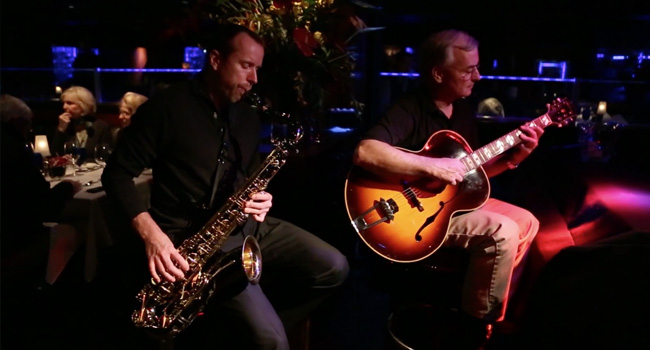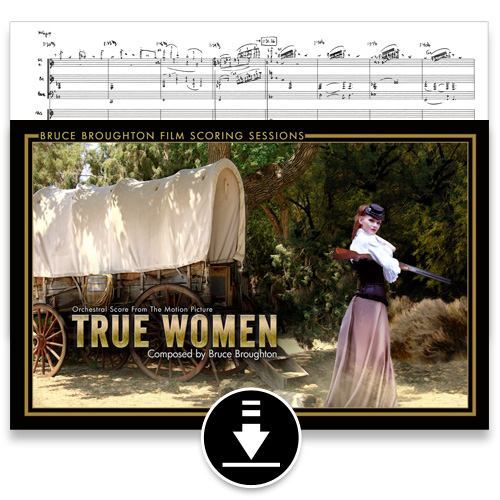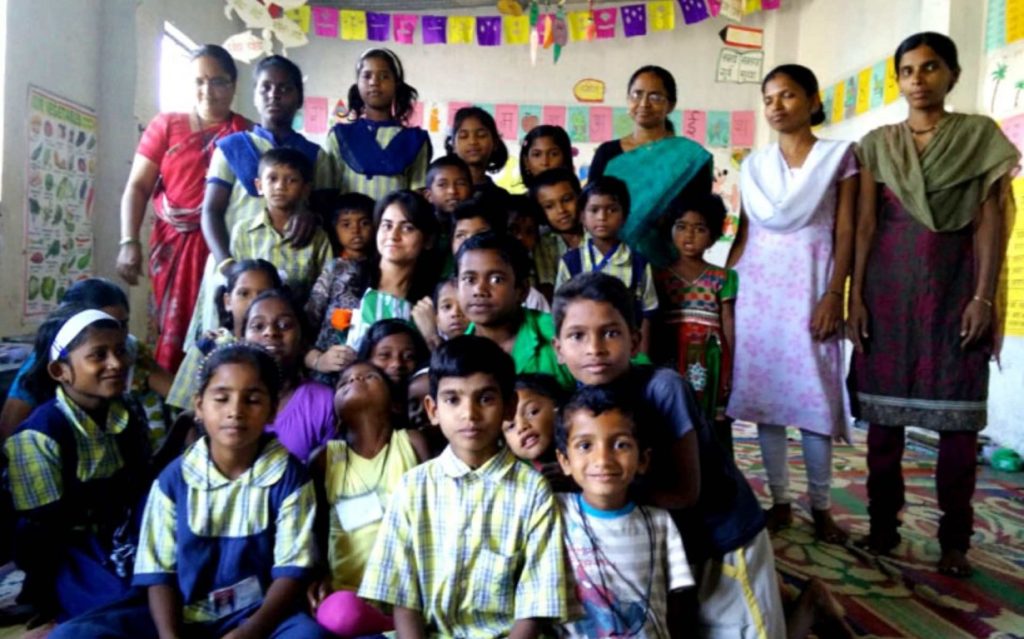The Untold Story of Sidemen: Hidden Heroes Behind Every Great Performance
The Role of Sidemen in Music
In the world of music, sidemen often remain in the shadows, their contributions overshadowed by the spotlight they shine upon the lead performers. Yet, without these unsung heroes, many iconic performances and albums would not exist in quite the same form. Sidemen, or session musicians, are the versatile and talented instrumentalists who provide the musical backdrop for solo artists, bands, and producers. They play pivotal roles in crafting the soundscapes that define genres and influence generations of musicians.
The origins of sidemen can be traced back to the early days of recording technology. As the industry evolved, so did the demand for skilled players capable of delivering diverse and nuanced performances. These musicians, often hired by the day or week, were the unsung architects of the music we know and love today.
One common misconception about sidemen is that they do not possess the musical talent of the headlining acts. However, this couldn't be further from the truth. These highly skilled players are as proficient as any lead guitarist or vocalist, and their abilities are often honed through years of rigorous practice and exposure to a myriad of genres and styles. Their versatility allows them to adapt to unique musical styles and contribute their own creative flair to each project.
A Day in the Life of a Sideman
A typical day for a sideman might vary widely depending on the project, but there are several key components to their work. These professionals often travel to various studios around town, sometimes even across the country, to record tracks for different artists. Each gig requires a level of preparation and adaptability that reflects their extensive training and experience.
For instance, if a sideman is tasked with accompanying a singer for a series of recordings, they must not only master their instrument but also understand the nuances of the song, its context within the artist's discography, and the overall sound aesthetic desired by the producer. They often attend rehearsals with the lead artist(s) before beginning the recording sessions to ensure everyone is on the same page musically.
During sessions, sidemen may perform a range of tasks. Some sessions might involve laying down initial tracks to be overdubbed later, while others might require detailed arrangements and harmonies. Each performance is meticulously crafted to serve the vision of the project, often leading to a final product that seamlessly blends the strengths of all involved parties.
In addition to technical proficiency, sidemen must develop excellent communication skills. Collaboration with producers, vocalists, and other instrumentalists is crucial for achieving the desired sound. They often need to make quick adjustments during performances based on feedback and changes in direction from the team.
Moreover, the camaraderie among sidemen is a significant aspect of their work. They frequently collaborate on multiple projects with the same producers or singers, building strong relationships and bonds. These connections often extend beyond professional boundaries, enriching both the personal and collaborative aspects of their careers.
Despite the collaborative nature of their work, sidemen are also required to maintain a high degree of professionalism. Each recording session represents a valuable opportunity for growth and showcasing their talents. They must manage their time effectively to juggle numerous commitments and ensure timely delivery of quality recordings.
The life of a sideman involves a lot of flexibility and adaptability. Unlike some traditional career paths, being a sideman means constantly moving between different projects and environments. This dynamic lifestyle offers unique challenges and opportunities, pushing them to excel under pressure and find creative solutions to ever-changing demands.
Recognition and Compensation
While sidemen provide invaluable services to the music industry, they often go unrecognized or undercompensated. Many professionals earn a living through sideman work, relying solely on these engagements to support themselves financially. The payment structure varies widely, with some receiving a flat rate per day/session, while others might be paid based on the length of the track or even on a percentage basis.
Unfortunately, sidemen occasionally face issues related to fair compensation and recognition. Recording sessions can be unpredictable and often occur at short notice, which can make it difficult for sidemen to plan their financial futures. Moreover, credit given to sidemen in final productions can be inconsistent, particularly when working with large-scale commercial projects where the lead performer or producer holds significant sway over acknowledgments.
To combat these challenges, sidemen have begun advocating for better treatment and recognition. Efforts include forming associations and networks that provide mutual support and negotiation resources. Professional organizations and guilds aimed specifically at sidemen help establish industry standards regarding rates, contracts, and credit allocation. These groups also offer workshops and seminars to educate sidemen on contract law and negotiation strategies, enabling them to protect their rights and negotiate fairer terms.
Additionally, social media platforms have become powerful tools for sidemen to showcase their talents and gain visibility. Many sidemen leverage these channels to build online portfolios, share their work, and connect directly with aspiring artists or producers. Through collaborations facilitated by social media, sidemen can explore new projects and expand their professional networks.
The rise of independent production has also created more opportunities for sidemen. DIY studios and self-produced music releases allow sidemen to participate in the creative process from beginning to end and gain more control over their work. While still challenging, this shift toward democratized music creation offers sidemen a new avenue to demonstrate their value and secure sustainable careers.
The Impact on Genre Evolution
Sidemen have played an essential role in shaping the sonic landscapes of countless genres. Their contributions are not merely instrumental; they often define the stylistic characteristics that distinguish one genre from another. For example, the West Coast jazz scene of the late 1960s was heavily influenced by sidemen like Herbie Hancock and Lenny White, whose innovative playing styles pushed the boundaries of traditional jazz. Similarly, the emergence of funk and R&B in the '70s is credited in large part to sidemen like Bootsy Collins and Leon 'Ndugu' Chanin, whose dynamic rhythms and horn sections defined the era's distinctive sound.
In rock music, sidemen like Eric Clapton and Jeff Beck have left indelible marks on guitar-oriented genres such as blues rock and hard rock. Their solos and improvisations have set benchmarks for generations of guitarists, inspiring countless performances and compositions. Drummers like Ringo Starr and Buddy Miles have also shaped the rhythm sections that define rock music, providing the driving force behind countless hits.
Even in the realm of electronic music, sidemen such as Rob Sheridan and Bob Moses have revolutionized the way synthesizers and drum machines are used, influencing the development of house and techno genres. Their innovative approaches to programming and sound design have contributed to the evolution of electronic dance music (EDM), creating new paradigms for production and live performance.
Sidemen have also been instrumental in bridging different musical traditions. Musicians like Branford Marsalis and Victor Wooten have combined jazz techniques with elements of world music and classical composition, expanding the horizons of both jazz and fusion genres. These cross-cultural influences have enriched the palette of modern music, fostering creativity and innovation.
The influence of sidemen extends beyond individual genres to shape entire musical movements. Artists like Miles Davis and Quincy Jones have relied heavily on their sidemen to sculpt groundbreaking albums that have become touchstones in popular culture. Without their contributions, these seminal works would lack their defining qualities and cultural impact.
Furthermore, sidemen have contributed significantly to the preservation and revival of older styles. Pianists like Billy Taylor and Cedar Walton have helped maintain and promote classic jazz, ensuring its legacy endures. Similarly, violinists like Itzhak Perlman and Maxim Vengerov have revitalized interest in classical repertoire through their virtuosic performances, often accompanying famous orchestras and ensembles.
Overall, sidemen have proven indispensable in the ongoing evolution of music. Their ability to blend various styles, techniques, and traditions has propelled the music industry forward, enriching it with a diversity of sounds and interpretations. By maintaining the integrity of their instruments and contributing to the collective artistry of a project, sidemen elevate the entire musical experience for audiences worldwide.
Challenges Faced by Sidemen
Despite their importance, sidemen often face numerous challenges that can impact their careers and well-being. One of the most significant hurdles they confront is the lack of long-term stability. Unlike traditional performers who have fixed residencies or long-term engagements, sidemen often work on a project-by-project basis. This unpredictability can make it difficult to maintain a consistent income and plan their lives. Many sidemen must rely on unstable schedules, juggling multiple jobs simultaneously to stay financially afloat, which can lead to burnout and stress.
Another challenge is the visibility and recognition they receive. While sidemen contribute significantly to the success of the projects they work on, their names rarely appear in the credits or public recognition. This invisibility can undermine their self-esteem and professional satisfaction. In an age where social media and fan engagement play critical roles in building a career, sidemen often feel marginalized due to the limited opportunities for self-promotion.
Contracts and legal protections are also areas where sidemen frequently encounter problems. Many sidemen are not provided with clear contracts detailing their obligations, compensation, and expected deliverables. This lack of formal documentation can result in disputes and misunderstandings, leaving sidemen vulnerable to exploitation. Without adequate legal support, disputes over payment, usage rights, and intellectual property can be challenging to resolve, often resulting in significant financial losses.
Career management and networking pose additional challenges. Many sidemen are responsible for marketing themselves, building relationships, and managing their professional image. Unlike traditional musicians, sidemen often lack access to marketing agencies or industry networks that can help promote their talent. This can limit their visibility and opportunities for collaboration with major artists and producers, thereby restricting their growth and earning potential.
The physical strain of the job is another considerable issue. Playing live and recording sessions can be demanding, requiring sidemen to perform multiple shows and sessions within a short timeframe. This grueling schedule can take a toll on their physical and mental health, potentially leading to injuries and burnout. Additionally, the repetitive nature of their work can contribute to the development of chronic conditions, such as carpal tunnel syndrome and musician's cramp.
Adaptation and Innovation: Navigating the Evolving Music Industry
The music industry's rapid evolution, driven by technological advancements and shifting consumer preferences, presents both challenges and opportunities for sidemen. Digital music platforms and streaming services have transformed the way music is consumed, distributed, and monetized. While these platforms can reach wider audiences and provide sidemen with exposure, they also disrupt traditional revenue streams and complicate the business model for independent musicians.
One critical trend is the rise of independent artists and producers, who are taking control of their careers and leveraging social media and digital tools to produce and distribute their music. This shift opens new avenues for sidemen to work on a freelance basis, collaborating with emerging artists and producers who might not afford the services of established sidemen. However, it also requires sidemen to adapt their skills and embrace new technologies, such as digital audio workstations (DAWs) and online collaboration tools.
Another trend reshaping the industry is the growing emphasis on live performances and concert experiences. With audiences increasingly seeking immersive and interactive entertainment, sidemen are called upon to design and execute complex stage setups, including lighting, visuals, and special effects. This necessitates a multidisciplinary approach, blending musical expertise with technical skills and creative vision. Sidemen must be adaptable, capable of switching between roles as musicians, engineers, and performers to meet the demands of evolving live productions.
The integration of artificial intelligence (AI) and machine learning (ML) in music production presents both challenges and opportunities for sidemen. AI-powered tools can assist in automating repetitive tasks, such as transcribing and arranging music, freeing up sidemen to focus on more creative aspects of production. However, this also raises concerns about job displacement and the potential de-skilling of human musicians. Sidemen must be proactive in learning how to leverage these technologies effectively, enhancing their own skills rather than competing with them.
Collaborative projects and cross-genre initiatives are becoming increasingly common, blurring the lines between different musical styles and cultural boundaries. Sidemen are uniquely positioned to bridge these gaps, drawing on their diverse skill sets and cross-cultural experiences to create innovative and boundary-pushing works. Collaborative platforms and networks facilitate these interactions, enabling sidemen to forge connections with artists from various backgrounds and cultures, leading to novel and impactful musical expressions.
Finally, the global reach of the internet and social media has democratized music consumption, creating new opportunities for international collaboration and distribution. Sidemen can now work with artists from around the world, contributing to projects that transcend geographical and linguistic barriers. This broader scope enhances their visibility and reputation on a global scale, offering a wealth of new opportunities for networking and professional growth.
The Future of Sidemen: Embracing Change and Building Stronger Communities
As the music industry continues to evolve, the role of sidemen is likely to change and grow in complexity. To thrive in this environment, sidemen must embrace adaptability and proactively seek out new opportunities. Collaboration and networking will become even more critical, as sidemen forge alliances with producers, engineers, and other creatives to navigate the changing landscape.
Professional organizations and communities can play a vital role in supporting sidemen by providing resources, education, and networking opportunities. These platforms can help sidemen develop the skills needed to succeed in a rapidly changing industry, offering training in areas such as contract law, business management, and digital marketing. By coming together, sidemen can advocate for better working conditions, fair compensation, and recognition, ensuring that they are valued members of the music community.
Ultimately, sidemen have the power to transform the music industry by bringing their unique skills, creativity, and experiences to bear on innovative projects. As they adapt to the changing landscape and build stronger communities, sidemen will continue to shape the future of music, ensuring that their contributions are acknowledged and celebrated for generations to come.
Empowering Sidemen: Building Resilient Communities
With the challenges faced by sidemen in mind, building resilient communities becomes a paramount necessity for their long-term success. By fostering support networks and promoting collaboration, sidemen can better navigate the obstacles they encounter. Professional organizations such as ASCAP, BMI, and similar entities can extend their reach to include sidemen, providing resources, advocacy, and networking opportunities. These groups can also negotiate better rates and terms on behalf of sidemen, ensuring fair compensations and improved working conditions.
Social media platforms and online forums provide valuable resources for sidemen to connect, share information, and find employment. Platforms like LinkedIn, Twitter, and specialized music communities can help sidemen build their professional profiles, network with other musicians and industry professionals, and access job postings and opportunities. By actively participating in these communities, sidemen can stay informed about industry trends, gain mentorship, and find meaningful collaborations.
Mentorship programs are another effective way to empower sidemen. Established professionals can mentor and guide up-and-coming sidemen, sharing their knowledge and experiences. These programs can be organized by music schools, professional organizations, or independent initiatives. Mentors can help mentees develop essential skills, navigate the complexities of the music industry, and build their confidence and resilience. This exchange of knowledge not only benefits mentees but also enriches the entire community by fostering a culture of shared understanding and support.
Workshops and seminars focused on legal advice, contract negotiation, and business management can equip sidemen with the necessary tools to protect their rights and plan for their financial futures. These educational events can be organized by professional organizations, trade unions, or local music venues. They provide sidemen with the information needed to understand complex contractual agreements and advocate for themselves effectively. By acquiring these skills, sidemen can negotiate more favorable terms and avoid common pitfalls, ensuring they receive fair compensation and credit for their work.
To address physical and mental health concerns, sidemen need access to proper care and support. Music industry unions can collaborate with healthcare providers to offer counseling and wellness programs for sidemen dealing with the stresses of an unpredictable career. These programs can include stress management techniques, injury prevention workshops, and mental health resources tailored to the unique demands of a sideman’s lifestyle.
In addition to professional support, sidemen should prioritize self-care. Maintaining a healthy work-life balance, setting realistic goals, and practicing mindfulness can mitigate the negative impacts of an irregular schedule. Sidemen must learn to recognize signs of burnout and take steps to avoid it, such as scheduling regular breaks, engaging in hobbies outside of music, and prioritizing sleep and nutrition.
The Role of Education and Training
Education and training play a crucial role in preparing young individuals for successful careers in sidemen positions. Music schools and conservatories can offer specialized programs that not only teach students the technical aspects of playing instruments but also focus on developing skills that are specific to sidemen. These programs can include workshops on recording techniques, collaboration with producers, and understanding the intricacies of studio environments. By providing a comprehensive curriculum, these institutions can better prepare graduates for the challenges they will face in the music industry.
Furthermore, music programs should incorporate real-world experiences, such as internships and apprenticeships, allowing students to gain practical insights into the industry. Opportunities to work with professional sidemen, producers, and engineers provide invaluable hands-on experience, helping students understand the dynamics of studio work and the expectations of clients. These immersive learning experiences can be facilitated through partnerships with recording studios, music publishers, and record labels.
Collaborative projects between schools and industry leaders can also enhance the educational experience. Inviting successful sidemen to speak at universities, hosting master classes, and organizing panel discussions can expose students to a range of perspectives and professional practices. Such collaborations not only provide mentorship but also help students build relationships within the industry early on.
Career readiness programs can be incorporated into music curricula to ensure that students are equipped with the soft skills necessary for success in the music industry. These programs can cover topics such as business acumen, networking, and marketing. By teaching students how to promote their talents, negotiate contracts, and manage their careers, these programs can set them up for long-term success.
Conclusion: Celebrating the Artistry of Sidemen
Sidemen are the unsung heroes whose artistry and dedication help define the essence of countless musical performances and recordings. From jazz and rock to electronic and world music, sidemen have left an indelible mark, shaping the very sounds that resonate with listeners around the globe. Despite the challenges they face, sidemen continue to innovate, adapt, and push the boundaries of what is possible in music.
As technology and industry trends continue to evolve, sidemen must remain resilient, embracing change and finding new ways to contribute to the music community. By building robust support networks, investing in education and training, and leveraging the power of collaboration, sidemen can thrive in an ever-changing industry. Their stories remind us of the profound impact that collaboration and collective effort can have in shaping the future of music.
Recognizing and celebrating the contributions of sidemen is not just a matter of fairness—it is essential for the continued health and vibrancy of the music industry. By working together, we can ensure that these hidden heroes receive the recognition and respect they deserve, paving the way for a brighter future for all those involved in making music.






















Comments